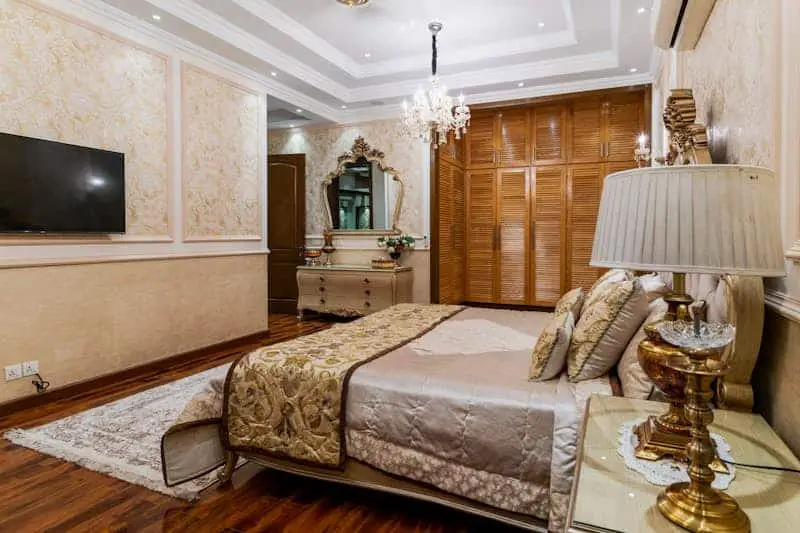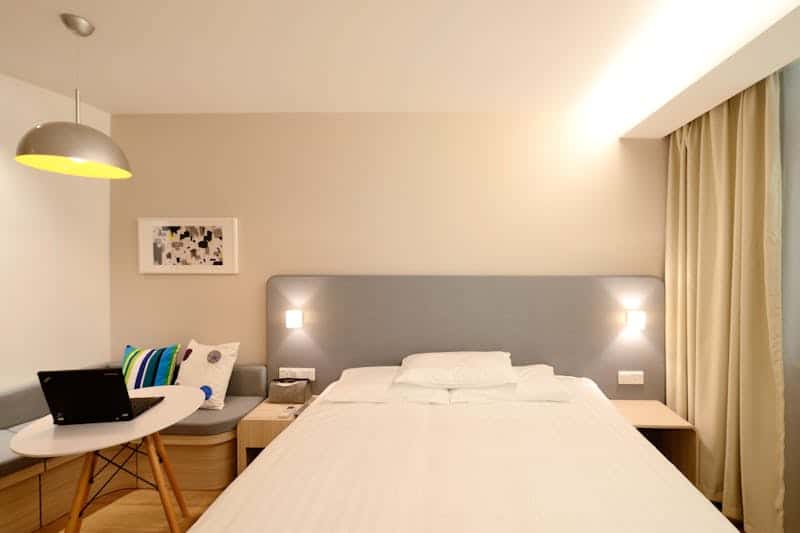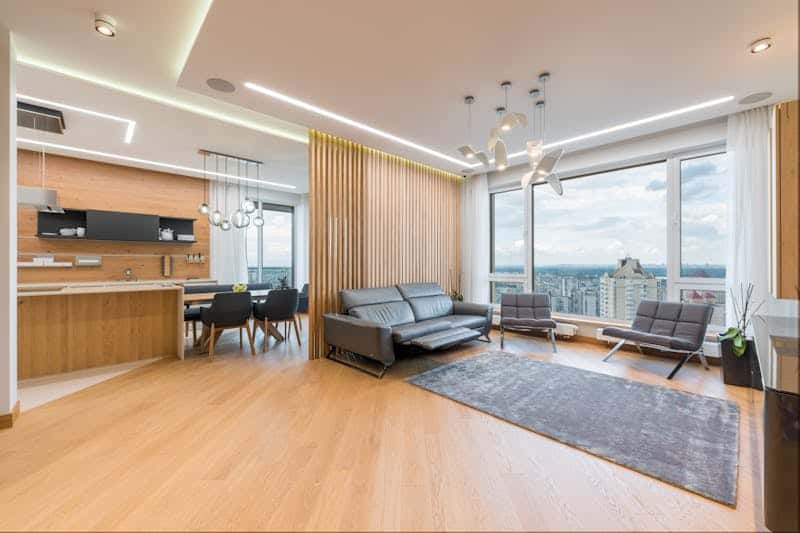The Average Size of Hotel Rooms: A Comprehensive Guide
When it comes to booking a hotel room, one of the most crucial factors that can make or break your stay is the size of the room. Whether you’re traveling for business or pleasure, having ample space to move around, store your belongings, and feel comfortable is essential.
But what exactly is the average size of a hotel room, and how does it vary across different hotel categories and locations?
If you’re short on time, here’s a quick answer to your question: The average size of a hotel room in the United States ranges from 325 to 400 square feet, with luxury hotels typically offering larger rooms averaging around 500 square feet or more.
In this comprehensive guide, we’ll delve into the details of hotel room sizes, exploring the factors that influence room dimensions, the differences between standard and suite accommodations, and the impact of location on room size. We’ll also provide tips on how to choose the right room size for your needs and offer insights into the latest trends shaping the hospitality industry.
Factors Influencing Hotel Room Size
The size of a hotel room can vary significantly depending on several factors. While some hotels offer spacious suites, others may have compact rooms designed for efficiency.
Understanding the key elements that influence room dimensions can help travelers make informed choices when booking accommodations.
Hotel Category and Branding
One of the primary factors that determines hotel room size is the category and branding of the property. Luxury hotels and high-end chains tend to offer more generous room dimensions, often exceeding 400 square feet (37 square meters).
These upscale establishments cater to guests seeking a more comfortable and lavish experience, with ample space for lounging, working, and relaxing. Conversely, budget hotels and economy chains typically have smaller rooms, ranging from 200 to 300 square feet (18 to 28 square meters), designed to maximize efficiency and affordability.
The average room size for luxury hotels in the United States is around 450 square feet, while budget hotels average around 250 square feet.

Location and Market Demand
The location of a hotel and the market demand in that area can also play a significant role in determining room sizes. In densely populated urban centers or popular tourist destinations, where real estate is at a premium, hotels may opt for more compact rooms to maximize occupancy and revenue.
On the other hand, hotels in suburban or rural areas may have the luxury of offering larger rooms without the space constraints of city centers. Additionally, market demand can influence room sizes, as hotels in high-demand areas may prioritize maximizing the number of rooms over individual room size.
Room Type and Configuration
The type of room and its configuration can greatly impact its dimensions. Standard rooms, designed for single or double occupancy, are typically smaller than suites, which offer separate living and sleeping areas. Family rooms or multi-room units may be more spacious to accommodate larger groups or extended stays.
Here are some typical room sizes based on type:
- Standard Double Room: 250-350 square feet (23-32 square meters)
- King Room: 300-400 square feet (28-37 square meters)
- Junior Suite: 400-600 square feet (37-56 square meters)
- One-Bedroom Suite: 600-800 square feet (56-74 square meters)
It’s worth noting that these figures are approximate and can vary widely based on the specific hotel and location. Don’t be afraid to ask about room dimensions when booking, especially if space is a priority for your stay.
By considering these factors, you can make an informed decision and find a hotel room that meets your needs and expectations for comfort and functionality. So, whether you’re seeking a cozy retreat or a spacious sanctuary, understanding the factors that influence hotel room size can help you find the perfect accommodation for your next adventure.
Standard Hotel Room Sizes
When it comes to hotel accommodations, room size is a crucial factor that can greatly impact a guest’s overall experience. The dimensions of a hotel room can vary significantly depending on the hotel’s category and location.
In this section, we’ll explore the average room sizes across different hotel segments, providing you with a comprehensive guide to help you make an informed decision when booking your next stay.
Budget and Economy Hotels
Budget and economy hotels are designed to offer travelers a comfortable and affordable stay. These properties typically cater to cost-conscious travelers who prioritize value over luxury.
The average room size in this category ranges from 150 to 250 square feet (14 to 23 square meters). While compact, these rooms are generally well-appointed with essential amenities, such as a comfortable bed, a private bathroom, and basic in-room entertainment options.
The average room size in economy hotels in the United States is around 225 square feet. This size allows for a reasonable amount of space to move around while still providing a cozy and intimate atmosphere. 😊

Midscale and Upper-Midscale Hotels
Midscale and upper-midscale hotels offer a balance between affordability and amenities. These properties cater to travelers seeking a more elevated experience without breaking the bank.
The average room size in this category typically ranges from 250 to 350 square feet (23 to 33 square meters). These rooms often feature additional living spaces, such as a seating area or a work desk, allowing guests to enjoy a more spacious and comfortable environment.
Amenities like complimentary breakfast, fitness centers, and swimming pools are commonly found in midscale and upper-midscale hotels, enhancing the overall guest experience.
Upscale and Luxury Hotels
Upscale and luxury hotels are designed to provide guests with an exceptional and indulgent experience. These properties often boast spacious accommodations, high-end amenities, and impeccable service.
The average room size in this category can vary greatly, but it typically ranges from 350 to 600 square feet (33 to 56 square meters), or even larger for suites and premium accommodations.
Luxury hotel rooms often feature separate living and sleeping areas, walk-in closets, and lavish bathrooms with premium toiletries and amenities. Some even offer private balconies or terraces, providing guests with breathtaking views and a sense of exclusivity.
| Hotel Category | Average Room Size (sq ft) |
|---|---|
| Budget and Economy | 150 – 250 |
| Midscale and Upper-Midscale | 250 – 350 |
| Upscale and Luxury | 350 – 600+ |
It’s important to note that these are general guidelines, and room sizes can vary based on location, brand standards, and individual hotel policies.
When booking your stay, be sure to check the specific room dimensions or consult with the hotel’s staff to ensure you select an accommodation that meets your needs and preferences. After all, a comfortable and spacious room can make all the difference in your overall travel experience! 🎉
Suite Accommodations: A Spacious Alternative
For travelers seeking a more luxurious and spacious accommodation experience, suite accommodations offer an enticing alternative to standard hotel rooms.
These suites come in various sizes and configurations, catering to different preferences and needs. From cozy junior suites to opulent presidential and penthouse suites, there’s an option to suit every taste and budget.
Junior Suites
Junior suites are a step up from traditional hotel rooms, typically offering a separate living area and a larger overall footprint.
The average size of a junior suite ranges from 450 to 700 square feet, providing ample space for guests to relax and unwind. These suites are perfect for couples or small families seeking a little extra room to spread out.
One-Bedroom Suites
For those seeking even more space and privacy, one-bedroom suites are an excellent choice. These suites feature a separate bedroom, living area, and often a kitchenette or full kitchen.
The average size of a one-bedroom suite in the United States is around 650 square feet, making them ideal for families or extended stays. One-bedroom suites offer a home-away-from-home experience, allowing guests to enjoy the convenience of hotel amenities while still having their own private retreat.
Presidential and Penthouse Suites
At the pinnacle of luxury accommodations are the presidential and penthouse suites. These lavish suites are often located on the top floors of hotels, offering breathtaking views and unparalleled amenities.
The average size of a presidential or penthouse suite can range from 1,500 to 5,000 square feet or even larger, with some suites spanning multiple floors. These suites often feature multiple bedrooms, living areas, dining rooms, and even private outdoor spaces like terraces or balconies.
While the average size of hotel rooms may vary, suite accommodations offer a luxurious and spacious alternative for those seeking a truly exceptional stay. Whether it’s a cozy junior suite or an opulent presidential suite, these accommodations provide the perfect blend of comfort, privacy, and indulgence, making them a popular choice for discerning travelers.

Regional Variations in Hotel Room Sizes
When it comes to hotel room sizes, there can be significant variations across different regions of the world. From the spacious accommodations in North America to the more compact rooms in Asia, the average dimensions can be influenced by factors such as cultural preferences, building regulations, and local real estate costs.
Let’s take a closer look at these regional differences:
North America
North American hotel rooms are often known for their generous proportions.
The average size of a standard room in the United States ranges from 325 to 375 square feet. This ample space allows for comfortable amenities like king-size beds, seating areas, and spacious bathrooms. However, it’s worth noting that room sizes can vary significantly between budget hotels and luxury resorts.
Europe
In contrast to North America, European hotel rooms tend to be more compact, reflecting the continent’s urban density and historic architecture.
The average size of a standard hotel room in Europe ranges from 150 to 250 square feet. This trend is particularly noticeable in cities like Paris, London, and Rome, where space is at a premium. However, some luxury hotels in Europe may offer larger suites to cater to more discerning travelers.
Asia
When it comes to hotel room sizes in Asia, the trend leans towards smaller accommodations.
The average size of a standard hotel room in major Asian cities like Tokyo, Hong Kong, and Singapore ranges from 150 to 250 square feet. This compact design is often a reflection of the high population density and limited real estate in these urban areas. However, many Asian hotels excel in maximizing space with clever design and efficient layouts.
| Region | Average Room Size (sq ft) |
|---|---|
| North America | 325 – 375 |
| Europe | 150 – 250 |
| Asia | 150 – 250 |
Middle East
The Middle East is known for its opulent and luxurious hotels, and this is often reflected in the room sizes as well.
The average size of a standard hotel room in the Middle East is around 350 square feet. Many high-end hotels in cities like Dubai and Abu Dhabi offer spacious accommodations, often with lavish amenities and stunning views. However, budget hotels in the region may have more modest room sizes to cater to a diverse range of travelers.
It’s important to note that these regional averages are generalizations, and individual hotels may vary significantly in their room sizes based on factors such as brand standards, target market, and location. When planning a trip, it’s always a good idea to research and compare room sizes to ensure they meet your specific needs and preferences.
Whether you prefer the spaciousness of North America or the efficient design of Asia, understanding regional variations can help you make an informed decision and enjoy a comfortable stay.
Choosing the Right Room Size for Your Needs
When booking a hotel room, selecting the appropriate size is crucial for ensuring a comfortable and enjoyable stay. The average size of hotel rooms can vary significantly depending on factors such as location, hotel category, and room type.
By considering your specific needs and preferences, you can make an informed decision and maximize your satisfaction.
Factors to Consider
- Purpose of Stay: Are you traveling for business or leisure? Business travelers may prioritize workspace and amenities, while leisure travelers might value spaciousness and relaxation areas.
- Number of Occupants: Will you be staying alone or with companions? A room that comfortably accommodates one person may feel cramped with additional guests.
- Length of Stay: A shorter stay may allow for a more compact room, while an extended stay might require additional space for comfort and convenience.
- Budget: Larger rooms often come at a higher price point. Consider your budget constraints and prioritize room size accordingly.
The average hotel room size worldwide is approximately 325 square feet (30 square meters). However, this figure can vary significantly based on location and hotel category. For instance, luxury hotels tend to offer larger rooms, with an average size of around 450 square feet (42 square meters).

Tips for Selecting the Ideal Room Size
- Check Room Dimensions: Many hotels provide room dimensions on their websites or upon request. Compare these measurements to ensure they meet your space requirements.
- Read Reviews: Online reviews can offer valuable insights into the perceived room size from previous guests’ perspectives. Look for comments on spaciousness or cramped conditions.
- Consider Room Layout: Even rooms with similar square footage can feel vastly different due to layout and furniture arrangement. Pay attention to descriptions or diagrams that illustrate the room’s layout.
- Upgrade for Added Space: If your budget allows, consider upgrading to a larger room category or suite. This can provide extra living areas, separate sleeping and sitting areas, or even multiple rooms.
Ultimately, the right room size is a personal preference that depends on your travel needs and comfort level. By taking the time to evaluate your priorities and considering the factors mentioned above, you can make an informed decision and ensure a memorable and enjoyable hotel stay. 😊
Conclusion
The average size of a hotel room can vary significantly depending on factors such as the hotel category, location, and room type. While budget and economy hotels typically offer smaller rooms ranging from 200 to 300 square feet, upscale and luxury properties often boast spacious accommodations averaging 500 square feet or more.
Suite accommodations, including junior suites, one-bedroom suites, and presidential or penthouse suites, provide even more generous living spaces for those seeking extra comfort and privacy.
When choosing a hotel room, it’s essential to consider your specific needs and preferences. Factors such as the number of occupants, the purpose of your stay, and your desired level of comfort should all play a role in determining the ideal room size.
By understanding the average hotel room sizes and regional variations, you can make an informed decision and ensure a comfortable and enjoyable stay, whether you’re traveling for business or leisure.







